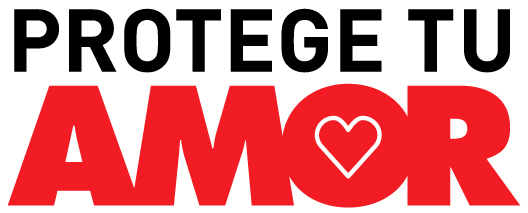Before the tax advantages, before the investment elements, before a single fancy rider had been dreamed up, the need for life insurance was recognized and honored. This is a product that can be traced all the way back to ancient Rome, where military leaders established guilds called “benevolent societies” to cover funeral expenses and living costs for the families of deceased members. From these simple roots, the tool has blossomed into a complex product line that protects consumers from any number of financial risks.
See also: A brief history of life insurance
Today’s life insurance carriers sell hundreds of products, serve millions of clients and bring in billions in revenue. But many of them got their start as small family companies, built from the ground up by smart businesspeople committed to filling a specific market need. As we look ahead to Life Insurance Awareness Month, we share the inspiring stories of 10 of today’s most prominent life insurers.

The real, live Aflac Duck takes a first look at the red carpet as he celebrates the company’s debut as an official partner of The GRAMMY®s. (Eric Reed/AP Images for Aflac)
Aflac
American Family Life Insurance Company of Columbus was born on November 17, 1955. Brothers John, Paul and Bill Amos entered the Life Insurance market with 16 employees and 60 agents. After their first year of operation, they had over 6,400 policyholders and $388,000 in assets. This early success allowed them to expand into a new market: In 1958, they pioneered cancer insurance to help ease the financial burden faced by cancer victims and their families.
By 1970, the company had changed its name to American Family Life Assurance Company of Columbus, and was licensed in 37 states. In 1974, Aflac first ventured into international sales, becoming the third U.S. insurer to set up shop in Japan. That same year, Aflac was listed on the New York Stock Exchange, opening at $7.25 per share.

People pass the AIG building, in New York, Tuesday, Jan. 8, 2013. (AP Photo/Richard Drew)
AIG
As the 42nd largest public company in the world, American International Group (AIG) is most often associated with its corporate headquarters in New York City. But the company first opened its doors 7,500 miles away in Shanghai. In 1919, American Cornelius Vander Starr started a two-room general insurance agency in the maritime city, called American Asiatic Underwriters. Two years later, Starr added a life insurance operation; six years later, he opened branches in Hong Kong, Vietnam and the Philippines. In 1926, the firm set up an outpost in New York, which was established as the world headquarters in 1939. The company continued to expand overseas and, in 1967, all operations were collected under the umbrella organization American International Group, Inc.

Axa insurance company CEO Henri de Castries poses after the presentation of the group’s 2008 full year results, in Paris Thursday, Feb. 19, 2009. (AP Photo/Christophe Ena)
AXA
Success came almost overnight for the Equitable Life Assurance Society of America, founded in 1859 by Henry Hyde. By the time the insurer turned 10, it was writing more new business than any other company in the world. Luxe accommodations followed: Equitable’s corporate headquarters in Manhattan was the first office building to use steam elevators; by 1879, it occupied the tallest office building in the world at the time.
From a product standpoint, Equitable was also a trailblazer. By the early 1880s, the company began marketing the first joint and survivor annuity, and established the practice of paying death claims immediately. In 1976, it pioneered the sale of variable life insurance products.
In 1992, with the sale of a major stake of company shares to French insurer AXA Group, Equitable converted from a mutual to a stock company and became a member of the Global AXA Group.

The Germania Life Insurance Company Building, now the W Union Square Hotel. (AP Photo/Mark Lennihan)
Guardian
It seems fitting that Delmonico’s, a legend in the Manhattan dining scene, was also the setting for the founding of one of the legendary players in the insurance world. In 1860, 21 prominent German-American businessmen gathered there to build the Germania Life Insurance Company of America. Civil rights lawyer Hugo Wesendonck led the group, whose original business model was to cover the growing wave of German immigrants arriving in the United States. In its early years, the firm kept strong ties to its German heritage and, in 1868, became the first U.S. insurance company to start an agency in Europe. The company’s European presence grew steadily until World War I, when it was forced to exit the market. Rebranding soon followed: In 1918, the company changed its name to Guardian Life Insurance Company of America.

An unidentified employee of Lincoln National Corp. exits the company’s headquarters, Monday, Oct. 10, 2005, in Philadelphia. (AP Photo/Joseph Kaczmarek)
Lincoln National
Lincoln National rose to join the ranks of elite insurers after the life insurance boom of the mid-19th century, conceived by a diverse and well-connected group of founders. On June 12, 1905, the company opened for business on the second floor of a bank in Fort Wayne, Indiana, backed by a collective of bankers, attorneys, wholesalers, hoteliers, manufacturers, physicians and brokers. Perry Randall, a Fort Wayne attorney, proposed the name “Lincoln” as a symbol of integrity.
The name became a powerful part of the company’s early branding and community outreach. Two months after the company’s launch, Robert Todd Lincoln provided a photograph of his father and authorized its use for company marketing efforts. In 1928, Dr. Louis A. Warren, a Lincoln scholar, joined the Lincoln National staff; that same year, the company opened the Lincoln Historical Research Foundation, home to one of the largest book collections about the late president in the United States.
In its first decades of operation, the company grew through a number of acquisitions, including Michigan State Life in 1913, Pioneer Life in 1917 and the Reliance Life Insurance Company of Pittsburgh in 1951.

The MassMutual Life Insurance Co. building (Wikimedia Commons)
MassMutual
In 1851, Connecticut life insurance agent George Rice raised $100,000 in capital to fund a mutual life insurance company in Springfield, Mass. Early policies restricted working near a steam engine, traveling south of Virginia in the summer and ocean voyages, though perhaps they weren’t quite restrictive enough; the first death benefit of $1,000 was paid to Charles Desotell, a gold seeker who died on a ship bound for San Francisco.
By 1865, the young company had already won assets under management of $1 million. By 1917, that number had grown to $100 million, and the company also began offering annuity products. Fifteen years later, this growing profitability allowed MassMutual to relieve some of the hardship of the Great Depression: The company issued 60,000 loans to hurting policyholders in the early 1930s, totaling more than $26 million.

In this photo taken Thursday, June 4, 2009, a woman works on a computer at the Metlife insurance office in Mumbai, India. (AP Photo/Rajanish Kakade)
MetLife
Today, MetLife is the No. 2 writer of life insurance premiums in the country, but the company was once a small player in a crowded marketplace. Founded by a group of New York City businessmen in 1863, the National Union Life and Limb Insurance Company began business in July 1864 insuring Civil War sailors and soldiers against wartime-related disabilities. By the end of that year, the company ranked dead last among the 27 carriers doing business in New York, having written just 17 life insurance policies and 56 accident policies.
Five years and several reorganizations later, President James R. Dow and his board of advisors abandoned the casualty business to focus solely on life insurance. The Metropolitan Life Insurance Company opened its doors on March 24, 1868 with six employees. It faced intense competition from a handful of well-established life insurers operating in New York, and struggled to grow throughout the 1870s.
By 1879, new MetLife president Joseph F. Knapp noticed the success his peers across the pond had found selling “industrial” insurance programs (essentially final expense life insurance). Knapp imported British agents to train his American sales force, and within a year MetLife was selling 700 industrial policies each day. By 1909, MetLife had risen to become the No. 1 life insurer in the country in terms of policies in force.

The former New York Life Insurance Company Building, also known as the Clock Tower Building, at 346 Broadway between Catherine and Leonard, was expanded from the original building by Stephen Decatur Hatch and McKim, Mead & White, between 1894 and 1899. (Wikimedia Commons)
New York Life
Founded in 1845 as the Nautilus Insurance Company, New York Life has built a well-deserved reputation as an industry trailblazer. In 1848, 15 years before The Emancipation Proclamation, company trustees made the decision to halt the practice, widespread at the time, of selling policies insuring the lives of slaves to their owners. In 1860, the company pioneered a non-forfeiture option — the predecessor to today’s cash value benefits — ensuring that a policy would stay in-force if a premium payment was missed. The company was also the first to distribute a cash dividend to policyholders.
Later in the nineteenth century, New York Life became the first U.S. life insurer to issue policies to women at the same rates as men, counting Susan B. Anthony as one of its early female policyholders. In 1896, the company rolled out coverage for people with disabilities, another industry first.

In this Aug. 2, 2005 file photo, a Prudential Financial sign on the marquis tells customers the company is inside an office building in Salt Lake City. (AP Photo/Douglas C. Pizac, file)
Prudential
The year is 1875. The scene is a basement office in downtown Newark, N.J. Here, insurance agent John Fairfield Dryden founded The Prudential Friendly Society with the intent of providing affordable final expense coverage to the working class. Weekly premiums for these policies were as low as three cents.
The demand for this level of coverage was high. In less than five years, the company had reached $1 million in assets, and expanded its client base to include the growing middle class. In 1885, the one-millionth policy was sold to John Dryden.
Other notable milestones: In 1876, Prudential hired the first female life insurance agent, Julia Babbitt. One year later, they rebranded to become The Prudential Insurance Company of America. And in 1898, the company granted a concession to policyholders, waiving premiums for those serving in the Spanish-American War. By 1923, less than fifty years after the company’s birth, Prudential’s assets had reached $1 billion.

The Transamerica tower, at left, is framed by the Golden Gate Bridge at sunrise in a view from the Marin headlands, Monday, Feb. 23, 2015, in San Francisco. (AP Photo/Marcio Jose Sanchez).
Transamerica
Transamerica’s history is rooted in the stuff of American Dreams. In October 1904, second-generation immigrant Amadeo Giannini founded the Bank of Italy in San Francisco. Housed in a converted saloon, the bank’s mission was to serve immigrants other banks would not serve. A year-and-a-half later, the institution stepped up to fill another need: providing loans to victims of the 1906 San Francisco earthquake, allowing them to rebuild what they had lost.
In 1928, the company grew through a merger with Bank of America and, two years later, acquired Occidental Life Insurance Company through Transamerica Corporation. The banking business split from the life insurance business in 1956, with the life entities taking the Transamerica name. In 1999, Dutch financial organization Aegon N.V. acquired Transamerica for $10.8 billion, although the company continues to transact business in North America under the Transamerica name.






Comentarios
Algo para decir?
Usted debe estar logueado para escribir un comentario.